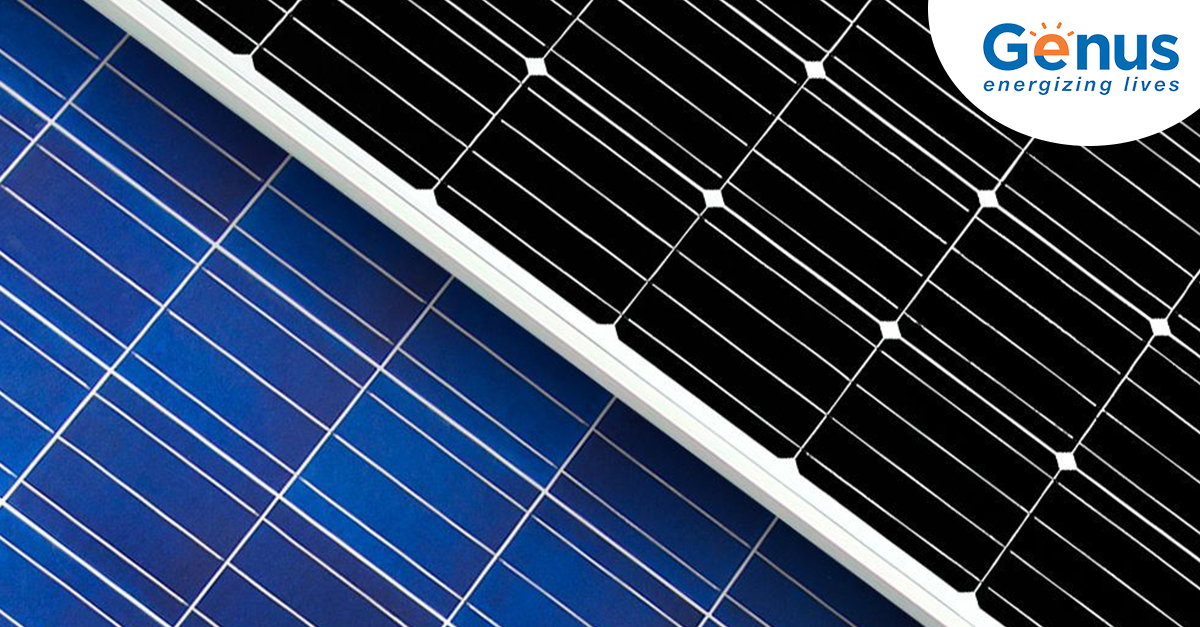
Solar solutions are transforming the energy industry and reducing the dependence of residential and commercial entities on the grid for electricity. While many have already gone solar, there are others who are still trying to understand the complexities involved while choosing the right panels. In fact, the availability of different types of solar panels makes the task challenging for solar power enthusiasts. However, you will certainly have a better idea of which panel to opt for once you have read this article.
And since the primary kinds of solar panels are monocrystalline solar panels and polycrystalline solar panels, understanding the difference between the two can go a long way to help you make a choice.
Monocrystalline vs Polycrystalline Solar Panels
To start with, both monocrystalline and polycrystalline solar panels are made of silicon. They share the same purpose in a solar photovoltaic (PV) system, which is to generate electricity by capturing solar radiation. However, there are some key differences when it comes to technology and features. Let’s find out in detail.
Monocrystalline Solar Panels
Monocrystalline solar cells are composed of a single silicon crystal, allowing them a uniform structure along with a high level of purity. In fact, these cells are made out of premium-grade silicon. Since the monocrystalline cells are made of a single crystal, the electrons generating an electric current have more space to move. Thus, monocrystalline panels are a highly efficient solution and are best for applications that thrive on efficiency. A typical monocrystalline panel will be black in colour and generally high-priced. The efficiency of solar cells decreases with an increase in temperature. However, a monocrystalline solar cell performs better than its counterparts under high head and light conditions.
Polycrystalline Solar Panels
As the name suggests, polycrystalline solar panels are composed of polycrystalline silicon. Manufacturers melt various fragments of silicon collectively to form the wafers for the panels. The manufacturing process is more efficient as there is hardly any raw material that remains unused during the manufacturing process. Polycrystalline solar panels are among the most popular solar panels. The blended cell composition offers a blue colour to these. The best part about the polycrystalline panels is their cost-efficiency. However, polycrystalline solar cells aren’t the best when it comes to performance efficiency.
Monocrystalline vs Polycrystalline: Comparison
- Monocrystalline solar cells are more efficient as they are made from a single silicon crystal. Typically, their efficiency ranges between 15 to 20 percent.
- Polycrystalline cells are composed of multiple silicon sources. This results in reduced efficiency. The efficiency of a polycrystalline cell can range from 13 to 16 percent.
- Monocrystalline cells aren’t the best when it comes to cost-efficiency.
- Low cost is the primary reason behind the popularity of polycrystalline solar cells.
- Monocrystalline solar panels are aesthetically pleasing due to their uniform build.
- Polycrystalline solar cells aren’t as good in terms of aesthetics, typically, due to their non-uniform composition.
- Polycrystalline solar cells have lower heat tolerance as compared to monocrystalline cells. This is the reason for the poor performance of polycrystalline cells under high-temperature conditions.
Hopefully, the above comparison will help you determine which solar panel is best for you. However, one must always opt for a panel after considering various parameters such as efficiency requirements, cost-efficiency, aesthetics, financial expectations, and more.
